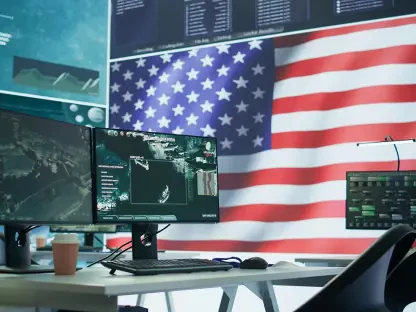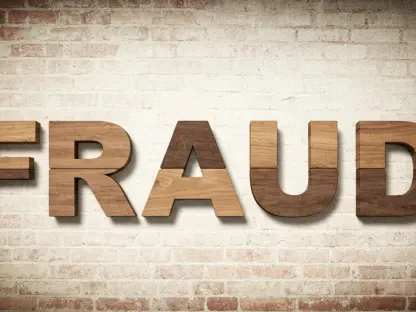In an era where data drives decisions, the staggering volume of over 290 million driver data queries processed annually through systems like the International Justice and Public Safety Network (Nlets) reveals a powerful yet contentious tool in public safety. This technology, designed to facilitate seamless information exchange between state Department of Motor Vehicles (DMV) systems and law enforcement agencies, stands at the intersection of innovation and privacy concerns. This review delves into the intricacies of driver data sharing, examining its mechanisms, real-world impact, and the pressing challenges it faces amid growing scrutiny over federal access to state-managed information.
Introduction to Driver Data Sharing Technology
Driver data sharing technology serves as a critical backbone for public safety by enabling law enforcement agencies to access vital information from state DMV systems through platforms like Nlets. This nonprofit network acts as a conduit, connecting disparate databases to provide rapid access to driver’s license details, registration data, and more. Its primary goal is to enhance inter-agency collaboration, ensuring that officers can verify identities and track records efficiently during investigations or routine operations.
The emergence of such technology reflects a broader push toward data governance and interoperability in law enforcement. As threats to public safety evolve, the need for real-time information sharing across state lines has become paramount. However, this capability also raises questions about oversight and the potential misuse of personal data, setting the stage for a complex debate on balancing security with individual rights.
Core Mechanisms and Features of Nlets
Data Access and Query Processing
At the heart of Nlets lies its ability to handle an immense volume of data queries, processing over 290 million DMV-related requests each year. This system serves as a vital link for federal agencies, including Immigration and Customs Enforcement (ICE), which alone accounted for approximately 290,000 queries in the past year. Such scale underscores Nlets’ role as a central hub for accessing state driver information, often bypassing local law enforcement channels for out-of-state or federal needs.
The significance of this mechanism cannot be overstated. By enabling near-instantaneous data retrieval, Nlets empowers agencies to respond swiftly to potential threats or criminal activities. Yet, the sheer magnitude of queries also highlights the system’s exposure to external entities, amplifying concerns about who accesses the data and for what purpose, especially when federal priorities may not align with state policies.
Integration with State DMV Systems
Nlets achieves its functionality through deep technical integration with DMV databases across 41 states, facilitating the sharing of critical data such as driver’s license photos and vehicle registrations. This interconnected network ensures that law enforcement can access standardized information regardless of jurisdictional boundaries, creating a cohesive framework for public safety operations. The system’s design prioritizes speed and reliability, often delivering results in real time.
However, managing such a vast network comes with inherent challenges. Disparities in state data formats, varying levels of technological readiness, and the need for constant updates pose significant hurdles. These integration complexities can sometimes lead to delays or inconsistencies, underscoring the need for ongoing investment in infrastructure to maintain performance across this sprawling system.
Recent Developments in Data Sharing Practices
The landscape of driver data sharing has recently come under intense scrutiny due to revelations about unintended exposure to federal immigration authorities. In a coordinated effort, 40 Democratic lawmakers raised alarms in late 2025, pointing to a loophole that allows ICE to tap into state DMV data via Nlets. Their concerns center on the lack of explicit consent or awareness from many states regarding this access, prompting calls for immediate action to safeguard residents’ information.
In response, a handful of states, including Illinois and Massachusetts, have taken proactive measures to restrict federal access to their data through Nlets. These actions signal a growing trend toward tighter control over data-sharing practices, with other states urged to follow suit. Additionally, there is a mounting push for transparency, as lawmakers advocate for detailed briefings with state coordinators to clarify how Nlets operates and who ultimately accesses the data.
This evolving situation reflects broader tensions between state autonomy and federal reach. As more states grapple with these revelations, the dialogue around data governance is shifting, with an emphasis on crafting policies that prevent overreach while still supporting legitimate law enforcement needs. The outcome of these efforts could redefine how driver data is shared in the coming years.
Applications and Impact on Public Safety and Immigration Enforcement
Driver data sharing technology plays a pivotal role in bolstering public safety by supporting a range of law enforcement operations. From aiding in criminal investigations to verifying identities during traffic stops, the ability to access DMV records through Nlets enhances situational awareness for officers. This capability has proven instrumental in solving cases that span multiple jurisdictions, ensuring that critical information is never out of reach.
However, the technology’s application in immigration enforcement has sparked significant controversy. ICE’s use of Nlets to conduct hundreds of thousands of queries annually has raised questions about the scope of federal authority over state data. This practice has strained state-federal relations, as some argue it diverts a tool meant for public safety into areas unrelated to its original intent, impacting communities in unforeseen ways.
The dual nature of these applications highlights a fundamental tension. While the technology undeniably strengthens law enforcement’s ability to maintain order, its involvement in immigration matters introduces ethical dilemmas about fairness and accountability. Resolving this conflict will require careful consideration of both the benefits and the unintended consequences of such widespread data access.
Challenges and Limitations in Data Privacy
One of the most pressing challenges facing driver data sharing technology is the erosion of privacy due to insufficient oversight. Many state officials remain unaware of the extent to which federal agencies access their residents’ data through Nlets, largely because of the system’s technical opacity. This lack of clarity creates an environment where personal information is shared without adequate safeguards or informed consent.
Beyond awareness, there are substantial regulatory and ethical hurdles to address. The risk of federal overreach looms large, particularly as immigration enforcement leverages state data for purposes that may conflict with local values. Lawmakers have begun advocating for stricter controls, urging states to limit ICE’s access and establish clearer accountability mechanisms to prevent misuse.
These privacy concerns are compounded by the potential for data breaches or unauthorized access within such a vast network. As Nlets connects numerous stakeholders, ensuring robust security protocols becomes paramount. Without significant reforms, the technology risks undermining public trust, even as it delivers undeniable benefits to law enforcement operations.
Future Outlook for Driver Data Sharing Technology
Looking ahead, the trajectory of driver data sharing technology will likely hinge on finding a sustainable balance between public safety imperatives and individual privacy rights. As political climates shift, particularly with heightened focus on immigration policies, states may face increasing pressure to assert control over their data. This could lead to more widespread restrictions on federal access, reshaping the operational scope of systems like Nlets.
Technological advancements also hold promise for addressing current shortcomings. Innovations in data encryption, user authentication, and granular access controls could enable states to dictate precisely who sees their information and under what circumstances. Such developments would empower local governments to align data-sharing practices with their unique priorities and legal frameworks.
Ultimately, the long-term impact of this technology will depend on policy evolution over the next few years, from 2025 onward. If stakeholders can navigate the complex interplay of security needs and privacy concerns, driver data sharing could emerge as a model of responsible innovation. However, failure to address these issues may perpetuate distrust and limit the system’s potential to serve the public good.
Conclusion and Key Takeaways
Reflecting on the journey of driver data sharing technology, it has become evident that systems like Nlets have transformed public safety by processing millions of queries and enabling rapid information exchange. Yet, the exposure of privacy vulnerabilities, particularly through federal access by agencies like ICE, has cast a shadow over its achievements. The scale of data sharing, coupled with a lack of state-level awareness, has intensified the urgency for reform.
Moving forward, actionable steps have emerged as critical to resolving these challenges. States need to prioritize restricting unauthorized access, investing in transparent data governance, and adopting advanced security measures to protect residents’ information. Collaborative efforts between lawmakers and technologists could pave the way for policies that uphold both safety and privacy.
Additionally, fostering public dialogue about the role of such technology in society offers a path to rebuilding trust. By addressing these considerations, stakeholders have the opportunity to redefine driver data sharing as a tool that serves justice without compromising personal freedoms, setting a precedent for ethical data use in an increasingly connected world.









